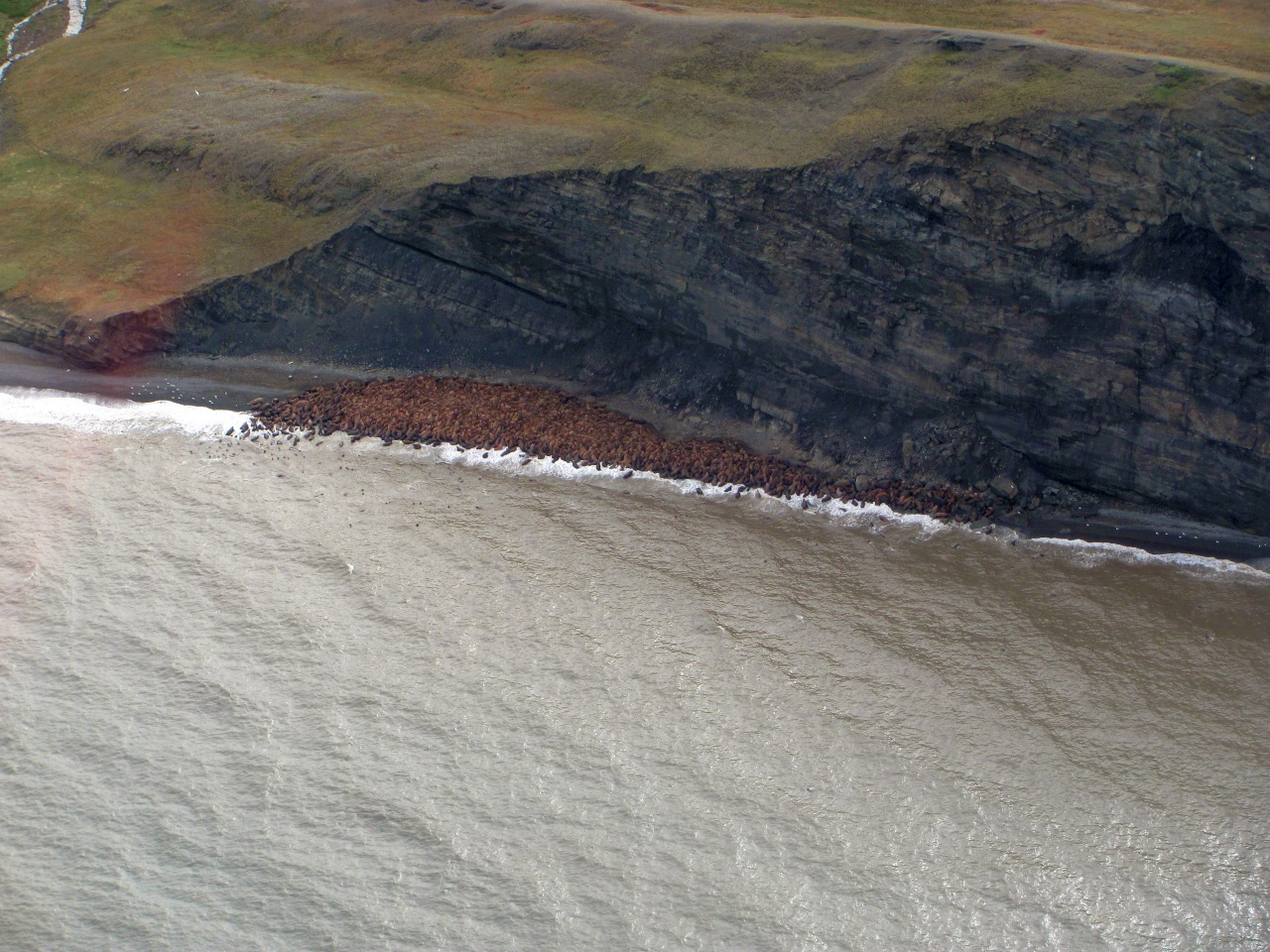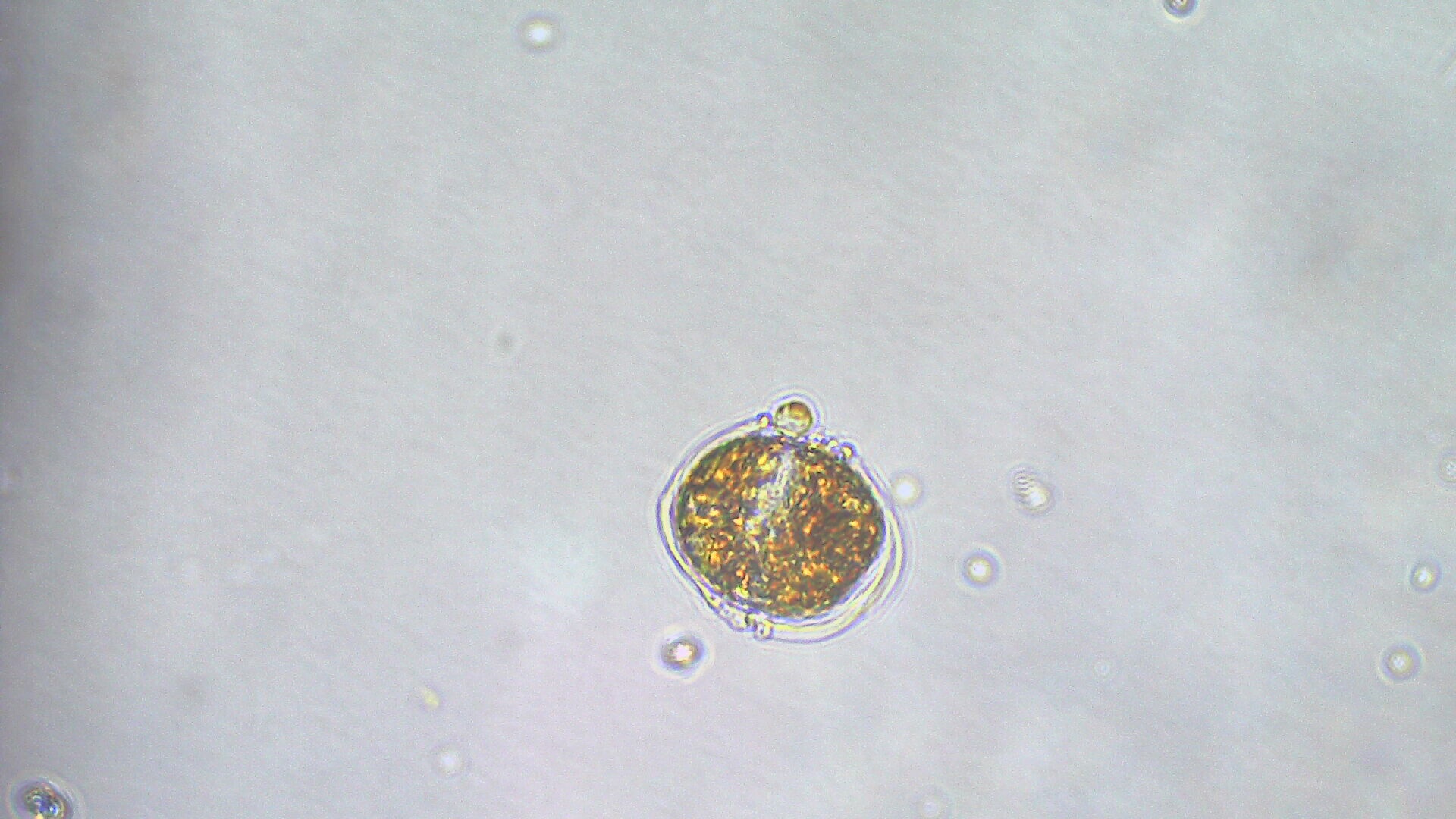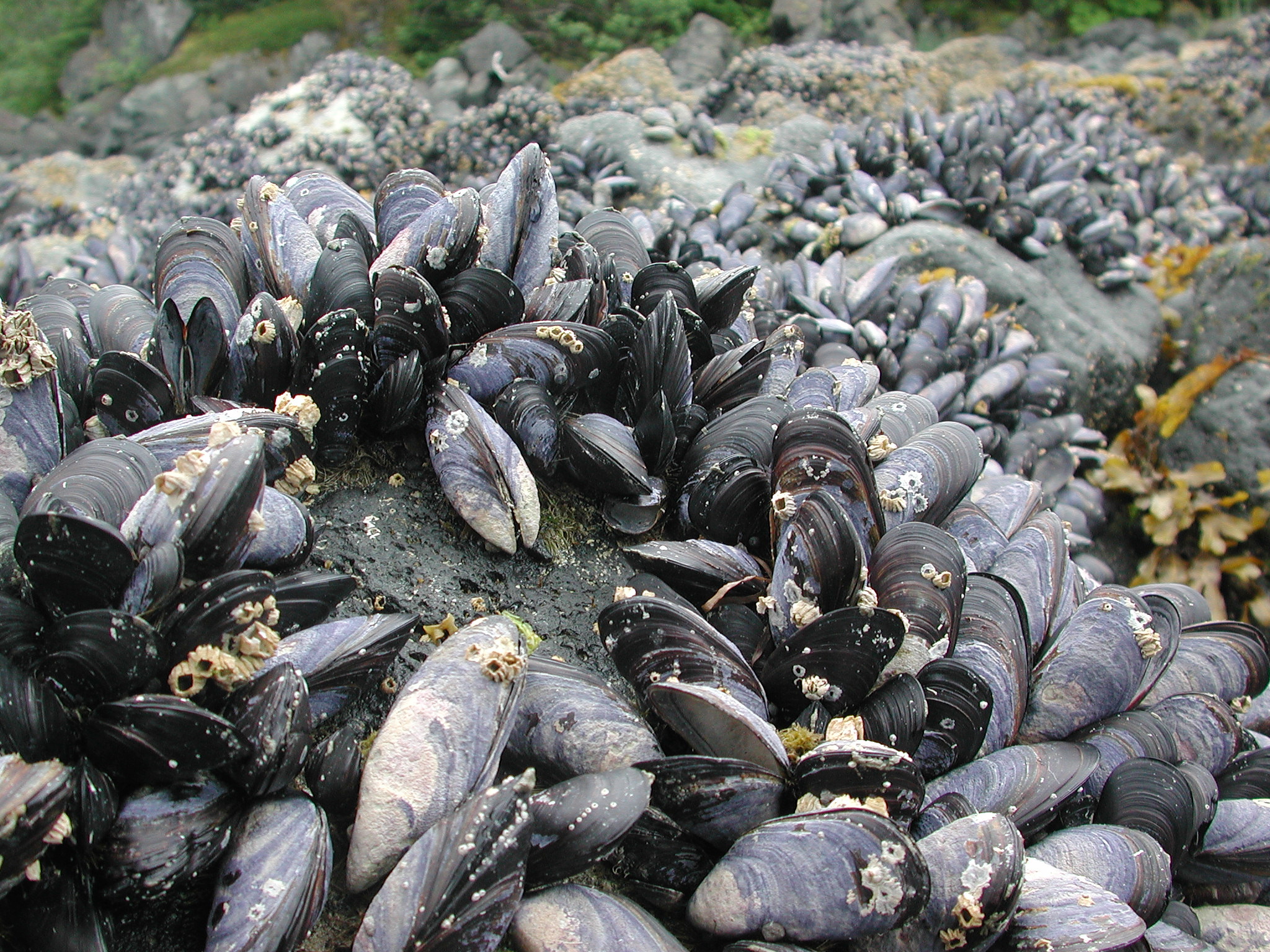The dormant cysts of a deadly algae are poised to revive in warming Arctic Alaska waters, a new study says
“The Arctic is set up to work when it’s cold. And it’s not as cold as it used to be.”

For a long time, the Arctic waters off Alaska were thought to be too far north and too cold to pose any dangers from Alexandrium catenella, the species of algae that produces the toxin causing paralytic shellfish poisoning.
But that’s no longer the case, new research shows.
Alexandrium blooms are not only drifting north through the Bering Strait as climate change increased the flow of warm water north from the Bering Sea — they are now being generated in the region, according to a study newly published in the journal Proceedings of the National Academy of Sciences. Massive beds of Alexandrium cysts — the seed state of the algae — have been found in sediments of the Chukchi and Beaufort sea. And those beds are a sleeping giant that is starting to awaken as water temperatures rise, according to the study.
That means the rapidly changing Arctic Alaska marine environment is causing yet another type of danger.
“As the region undergoes an unprecedented regime shift, the exceptionally widespread and dense cyst and cell distributions represent a significant threat to Arctic communities that are heavily dependent upon subsistence harvesting of marine resources,” the study warns.
The study details findings from Arctic Alaska research cruises taken in 2018 and 2018, summers when scientists found dense Alexandrium blooms in the northern Bering Sea and in the Chukchi.
The new study describes the cyst beds in the Chukchi Sea, mapped all the way to the U.S.-Russia maritime border — though lead author Don Anderson of the Woods Hole Oceanographic Institution said the cyst deposits almost certainly extend into Russian waters.
Another cyst bed, not nearly as large but still significant, was measured just on the other side of Point Barrow in the westernmost part of the Beaufort Sea.
To Anderson, who runs a lab specializing in research into harmful algal blooms, the results were striking.
The Chukchi cyst bed, the study found, is six times as large as one in the Gulf of Maine, where Anderson has spent years working and where saxitoxin from algal blooms regularly disrupts shellfish harvests. Concentrations in the Chukchi bed ran as much as 15 times that of the Gulf of Maine’s highest concentrations, according to the study.

Those massive Alaska cyst beds are believed to be the product of what is called a “trail of death,” with portions of algae flowing north and then converting back to the seed stage and being deposited on the seafloor, where conditions were too cold to allow any regeneration, as Anderson explained it.
Recent events show that Alaska’s Arctic waters are no longer an Alexandrium dead end.
At least one saxitoxin-producing Alexandrium bloom documented in the Chukchi, the late-summer event of 2019 in the Chukchi, was likely generated by the local cyst bed, not by algae drifting up from the south, the study concluded.
Also that year, Anderson and his colleagues documented the first cases of clams in the Bering Strait and Chukchi Sea regions with levels of saxitoxin beyond the safety limits for human consumption.
[Alaska’s first shellfish toxin death in 10 years comes amid signs of spreading harmful algal blooms]
Warming temperatures are behind the changes, Anderson said. Rising temperatures around the massive cyst beds create “what it takes to make recurrent annual problems,” he said. Temperatures at the seafloor have been high enough in recent years to enable cysts to germinate within two weeks, he said.
For several years, Anderson he suspected that algal toxins might become a problem in Alaska’s Arctic waters. But it took a few modern discoveries for the issue to gain enough attention to secure research funding.
One important piece of information came from Japanese cruise a decade ago that produced the first documentation of huge Alexandrium cyst beds in the eastern Bering Sea and in the Chukchi. Another important piece was landmark 2016 study led by National Oceanic and Atmospheric Administration scientists that documented algal toxins in at least trace levels in 13 species of marine mammals, including in seals and whales in Chukchi and Beaufort. Researchers found the animals contained both saxitoxin, which causes paralytic shellfish poisoning, and domoic acid, which is produced by a different type of algae and which causes seizures and brain damage.

Research into Arctic Alaska’s harmful algal bloom dangers continues, notwithstanding an interruption by the COVID-19 pandemic. One focus in the coming years will be on the cysts that lurk in the sediments on the Russian side of the maritime border, Anderson said.
For now, he said, the concern about saxitoxin or other algal toxins in Arctic Alaska is not so much that people will ingest them directly but that there will be a ripple effect through the food web, diminishing food security for those who depend on the sea for nourishment.
“It could be that the real long-term impact is on the ecosystem and on the food that people eat,” he said.
Scientists are investigating the potential impacts on wildlife.
One research question concerns the effect of algal toxins on the huge populations of seabirds that spend summers in Alaska. Those bird populations have been hit by successive die-offs in recent years, and scientists are investigating the role that those toxins might have played. There is ongoing research by the U.S. Geological Survey about Alaska seabirds’ algal toxin tolerance levels, among other subjects.
With a few exceptions, such as cases where birds died after eating saxitoxin-tainted sand lance, there has not been evidence of death from acute toxin exposure in the recent die-offs. Even the massive “wreck” that killed up to 1 million Alaska murres in the Gulf of Alaska starting in 2015 was not caused by algal toxins, research shows.
[Researchers are finding more signs of dangerous toxins from algae in Alaska wildlife]
However, algal toxins could be a contributing stressor to birds coping with other problems in a fast-changing environment, scientists have said.
Anderson concurs with that assessment. “I don’t think these toxins are killing the birds right now. I think there’s something much bigger and more fundamental,” he said.
Also concurring is Alex Whiting, environmental program director for the Native Village of Kotzebue.
Residents in his region are not too worried about an immediate threat of algal toxins, which is more theoretical or “esoteric for people,” Whiting said. Unlike some other changes in the marine environment, the threat of harmful algal blooms has not materialized in daily life, he said.
“It could. And it’s likely to, I would say. But that’s something in the future,” he said.
At present, there are more pressing concerns. One example, Whiting said, is a recent die-off of herring in and around Kotzebue sound, for which there is no explanation yet.
The new information about algal toxins adds to other information that justifies a close look at the transforming marine environment, Whiting said.
“It’s important to be able to monitor your local conditions because there are so many changes,” he said. “The Arctic is set up to work when it’s cold. And it’s not as cold as it used to be.”